The development of effective standards and guidelines for the design and construction of safe electrical facilities in water-related recreation, landscaping and commercial areas is an evolving discipline that is gaining in importance as these types of facilities become more popular. While the general class of facilities addressed here has existed for many years, there has been no specific guidance and regulation until development of NEC-2005. This discussion addresses the new requirements for such facilities.
While the emphasis is on inspection and construction-related issues, it also includes a few theoretical and design-related topics to provide some background from a technical perspective.
As with swimming pools and spas, which were only nonspecifically regulated prior to the introduction of Article 680 in NEC-1962, designers, installers and authorities having jurisdiction (AHJs) have been left in the dark as to the specific means of addressing shock-related electrical issues associated with aquatic facilities not covered specifically in the Code. Involved personnel were literally “up the creek” (pun intended) if they were developing a permanent facility on or near the water that did not involve a floating building (Article 553), a marina or boatyard (Article 555), or one of the several variants on pool and spa technology addressed in Article 680. In the past, requirements for facilities not covered by these three articles were imbedded as general principles throughout the first four chapters of the NEC, but they were never specifically called out. Until the introduction of Article 682 in the 2005 edition, the Code did not directly address pertinent design and installation issues unique to such other water-related installations.
Efforts to address aquatic facilities not included in Articles 553, 552 and 680 date back at least to 1993, as cited in the substantiating information for the proposal by the NEC CMP-17 Task Group on Other Bodies of Water that spawned the new Article 682. The 1993 proposal specifically addressed “storm retention basins, sewage treatment ponds, and similar bodies of water not covered under the scope of Article 680,” and inclusion of such facilities within Article 680 was rejected by the CMP as “impractical.” The appointment of the task group provided a means whereby the specific issues associated with these other facilities could begin to be addressed in their own context, and not piggybacked on some other, only partially relevant, portion(s) of the Code.
And, as with the three preexisting articles cited above, it should be expected that the breadth, scope and level of detail in 682 will expand over time as technology changes and relevant topics are worked out. One only has to compare the original version of 680 (1962) with the current version to see that they are very different, even though the general thrust is the same. The 2005 inaugural version of Article 682 is a good start, but nonetheless it is only a start.
Purpose and Scope of Article 682
With regard to the scope of Article 682, as delineated in 682.1, the 2005 NEC Handbook states in part: “Electrical equipment such as pumps, luminaires and their associated supply wiring are frequently installed in lakes, ponds, aeration and treatment basins, and similar bodies of water, and the new requirements are designed to minimize the shock hazards inherent in those wet and damp locations.” In fact, the article goes much further, incorporating all wiring and equipment located adjacent to the water and serving the equipment on, in, adjacent to, or under the water.
It is important to understand that 682.1 references “natural or artificially made bodies of water … such as but not limited to [author’s emphasis] aeration ponds, fish farm ponds, storm retention basins, treatment ponds, irrigation (channel) facilities.” The same wording appears in 682.2. While the article’s scope as to naturally occurring bodies of water is obvious from the definition, there may be some room for confusion as to which artificially made water bodies are included. A superficial reading of these two sections potentially can result in a conclusion that the article deals with a specific class of relatively small special-purpose facilities like those on the list, but such a conclusion would be in error. In fact, the article’s wording is general enough to include all natural and artificially created bodies of water, including creeks, rivers, lakes, ponds, reservoirs, flood control impoundments and channels, drainage ditches, decorative man-made ponds and livestock tanks (which are simply small reservoirs), in addition to facilities on or similar to those on the list. The wording is clarified somewhat in the 2005 NEC Handbook, which states “the term artificially made bodies of water includes all bodies of water that are not naturally created … the uses of artificially made bodies of water include decorative, agricultural, municipal infrastructure, and industrial.” The Handbook’s explanatory text then cites an example and photograph of a decorative pond with a fountain. It is reasonable to expect that subsequent editions of the Code likely will clarify the actual wording to eliminate any potential confusion.
Electrical Datum Plane — Defining the Limits
The limits of the physical area addressed by Article 682 are defined by the electrical datum plane, a term originally used in Section 555.2. Understanding this definition and how to apply it is essential to understanding the requirements of Article 682.
Paraphrasing the 2005 NEC Handbook, the electrical datum plane provides a “horizontal benchmark” to which the location of electrical equipment on or near the water is referenced. All locations addressed in the article—inside, outside, over and under—are with respect to the surface and boundary of the electrical datum plane. Note that the definition in 682.2 is not identical to the one in 555.2, and therefore they cannot be used interchangeably. Although both Articles 555 and 682 define physical areas where the water is subject to natural variations due to tidal movement or climatic changes and man-made intervention associated with dam and gate operation, the more extensive scope of 682 by necessity requires an expanded definition. Consequently the electrical datum plane for facilities addressed in 682 is defined by the following four definitions (paraphrasing the article’s language in 682.2—all italics author’s emphasis):
- A horizontal plane 2 feet (600 mm) above the highest normal high tide (tidal areas–figure 1), or
- A horizontal plane 2 feet (600 mm) above the highest normal water level (areas not subject to tides–figure 2), or
- A horizontal plane 2 feet (600 mm) above the “prevailing high water mark or an equivalent benchmark based on seasonal or storm-driven flooding,” obtained from the AHJ (flood-prone areas–figure 3), or
- A horizontal plane 30 inches (750 mm) above the water level and a minimum of 12 inches (300 mm) above the deck elevation [floating structures that can rise and fall with the water level and that can rise and fall to the elevations defined in (1) and (2) above] (floating structures not subject to lateral movement–figure 4).
The shoreline is defined as the horizontal boundary of the datum plane where the water meets the land at datum plane elevation (items 1, 2, and 3 above).
Several specific issues should be recognized when applying the above four definitions to datum plane determination. These issues can pose the potential in certain cases for confusing and/or inconsistent interpretations of the Code language. Most of these issues are associated with definition (3) above. They are presented here not as criticism, but to provide some technical insight into concerns that will be faced by many AHJs, designers and installers in implementing the requirements of 682. Common sense, safety, and good planning should be the norm when faced with such interpretative concerns.
First, according to Code language none of these four definitions apply to any extreme condition associated with disasters of any type. This restriction somewhat contradicts item 3, at least in semantic terms, as flooding is by definition an extreme condition that can be and is generally associated with disasters (more on this issue below). This issue can be resolved by the AHJ.
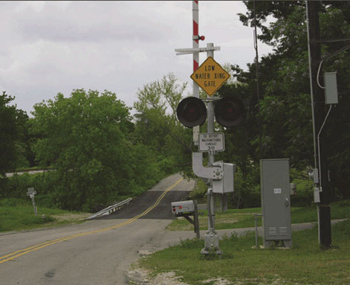
Photo 1. Electrical equipment serving flood-prone areas, such as this gate protecting a low water crossing, is covered under Article 682.
Second, there are clearly areas where very extreme (not “normal” extreme) conditions must define the electrical datum plane. One of the bonuses associated with Article 682 is that, while it was conceived to enhance electrical safety, it also results in regulation of installations within flood plains to provide more reliable operation. For example, in some areas of the United States that construct flash-flood-prone low water crossings on roadways, electrically powered flood detection systems in the stream bed are used to provide remote warning and monitoring information, and to operate gates, bells and lights to create warnings and barricades to motorists in the event of high water over the road (photo 1). This author is aware of hard-wired flood warning systems at various locations that were inspected and passed by AHJs, which incorporated electrical equipment and wiring in vulnerable locations inside the flood plain limits, and that failed due to flood and water damage to the electrical plant at precisely the times they were required to operate properly. The new installation requirements in 682 should go far in preventing malfunction of new installations of this and similar purpose by providing tighter controls on types and location of equipment. In these types of special cases, the AHJ will need to define the datum plane in conformance with the performance requirements of the system being installed, and the project-specific definition so developed may not be consistent with any other prevailing local definition that they may have created for general use.
Third, development is allowed in various flood plains, with specific weather events (e.g., 10-year, 50-year or possibly 100-year flood) defining these limits; these events may not reflect maximum or anticipated “normal” or “prevailing” worst-case conditions. Similarly, the highest “normal” water level in some reservoirs may or may not reflect building restrictions that control electrical installations in areas not conforming to the definitions. For example, some flood control reservoirs allow residential and commercial development in some or all of their upper flood pool, which is an area within the contours of the reservoir that is designed to be used routinely to accommodate normal seasonal and weather-event-related floodwaters. AHJs regulating electrical installations in either of these two flood-prone areas, that have not done so already, now must develop and make available sets of benchmarks and/or guidelines defining the datum plane based on their development rules. Designers and installers must recognize that, in these areas, an installation can be in conformance with the NEC (as interpreted by the AHJ) but still subject to routine flooding, and must coordinate installation location limits and equipment types with the AHJ based on the AHJ’s definition of the datum plane.
Fourth, the Code language in definition (4) above specifically excludes floating structures capable of moving laterally. Some of these structures may be anchored and capable of a range of lateral movement, and some can move laterally to follow an expanding or contracting reservoir area. In some cases the AHJ will need to develop policies for applying the definition in (4) to these structures.
None of these datum plane issues are insurmountable, but in some cases they may result in the breaking of new ground for the AHJ. Policies developed in association with installations covered by Article 555 may be applicable directly in some cases and likely can be applied with modification in others.
Installation Requirements
With only a few exceptions, installation requirements are straightforward.
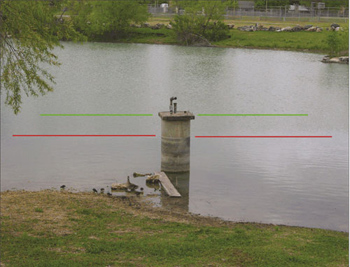
Photo 2. Regardless of the type of structure, 682.12 requires that all electrical connections not intended to be submerged must be at least 12 inches above the deck level and cannot be below the electrical datum plane.
Section 682.3 requires compliance with all other applicable areas of the Code, and mandates that installations in areas with boat traffic meet the wiring method requirements of Section 555.13(B), as well as those in Article 682. Section 682.13 allows wiring methods in Chapter 3 and Articles 553, 555 and 590 where identified for wet locations. Section 682.12 states that all connections “not intended for operation submerged shall be located at least 300 mm (12 in.) above the deck of a floating or fixed structure, but not below the electrical datum plane” (see photo 2).
Section 682.10 requires that electrical equipment and transformers, and their enclosures, be “specifically approved for their intended location.” It goes further and requires that “no portion of an enclosure for electrical equipment not identified for operation while submerged shall be located below the electrical datum plane.” This latter requirement directly relates to the site-specific definition of the datum plane, which has been discussed at length above. Electrical equipment must be specified and installed to withstand “normally” occurring high water events as defined by the Code language and the AHJ. General good engineering practice should provide an additional margin of safety in the design. As discussed above, some project-specific requirements will necessitate additional coordination between design professionals, the contractor and the AHJ to define proper datum plane elevations, some of which may encompass more area than the datum plane elevation in general local use. Additionally, inspectors who do not normally deal with underwater equipment and methods will now be called upon to become familiar with them. The use of improper electrical equipment and wiring methods in aquatic environments is a significant issue. IAEI News has published several articles dealing with this specific problem as it applies to pools and spas over the past ten years. The inclusion of additional aquatic venues by the adoption of Article 682 will allow needed additional control over misuse of these products.
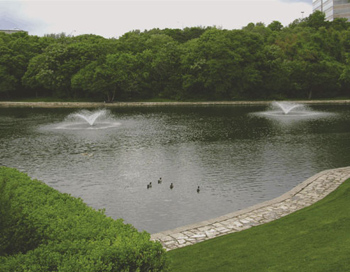
Photo 3. While Article 682 applies to electrical equipment associated with fountains like these, 682.15 does not specifically address GFCI protection of associated pumps and underwater lights.
Section 682.15 requires GFCI protection on all 15- and 20-ampere single-phase, 125–250 volt receptacles, if in-stalled outdoors or on floating buildings or structures within the datum plane that are “used for storage, maintenance, or repair where portable hand tools, electrical diagnostic equipment or portable lighting are to be used.” The GFCI cannot be located less than 12 in. (300 mm) above the datum plane. This article clearly targets protection of workers. It does not specifically address permanent equipment that may be associated with swimming and wading areas in creeks, reservoirs, lakes and ponds, all of which are covered under 682 for pools and spas. These swimming/wading areas may be located proximate to submersible pumps that can pose an electrocution hazard, but that are not generally subject to access by personnel while energized. Additionally, it does not specifically address underwater lights and submersible pumps associated with fountains in natural lakes, rivers and ponds (photo 3).
However, Section 682.33(B) in Part III Grounding and Bonding, adds a general provision that “all circuits rated not more than 60 amperes at 120 through 250 volts, single phase, shall have GFCI protection.” This provision is unexpectedly located in a section addressing areas not requiring equipotential planes, and it’s location and wording will be a likely source of confusion until all the details in the article are fleshed out. A look at the history will assist in understanding the scope of this language, regardless of its location. A companion proposal regarding equipotential planes was also adopted for inclusion in Article 682 by the NEC CMP-17 Task Group on Other Bodies of Water, and this proposal included, under the heading “Areas Not Requiring Equipotential Planes,” the statement that “all circuits providing electric power to the controlled equipment [supplied by the service equipment or disconnecting means] that is accessible to personnel shall have GFCI protection.” Note the original emphasis is on controlled circuits that are accessible to personnel; swimming and wading hazards associated with the general public are not directly addressed.
This situation raises several challenges for the AHJ, designer and installer. First, the Code language can be interpreted to imply that all circuits are to be GFCI-protected, while the proposal language adopted 10-0 by the CMP clearly deals with a subset of all equipment. Second, the direction of these provisions is clearly toward protection of authorized personnel accessing the equipment, while the scope of the article is far broader, involving locations accessible to the general public, some of whom may be in the water.
Until such time as these matters are specifically reconciled in 682, designers and installers would be well-advised to err on the side of safety by following the most conservative interpretation of the Code language and protecting all circuits literally meeting the criteria in both 682.15 and 682.33(B). Further, to address the public access issue (in locations where the public has access), designers and installers can find some technical guidance in Section 680.51, which is directed at fountains not in natural lakes, rivers and ponds, but which also contains relevant approaches to providing a design and installation with integral protection. Section 680.51 sets limits on voltages, provides for overtemperature protection, spells out servicing and stability requirements, establishes proper wiring methods, and requires GFCI protection on all underwater lights, submersible pumps and other submersible equipment operating at over 15 volts to ground. It also specifies that transformers servicing low voltage equipment comply with 680.23(A)(2).
Section 682.11 addresses requirements for locating service equipment for floating structures and submersible electrical equipment. Article 682.14 addresses disconnecting means for the same equipment. They will be discussed together here. Both service equipment and disconnecting means must be located no closer than 5 ft. (1.5 m) horizontally from the shoreline (as defined by the datum plane) and live parts must be at least 12 in. (300 mm) above the datum plane. Also, the disconnecting means must meet the following additional three requirements; it must be:
- Readily accessible on land (not over or on the water);
- Located within sight of the edge of the shoreline (as defined by the datum plane);
- In the supply circuit ahead (on the line side) of the structure or equipment connection, and cannot be more than 30 in. (750 mm) from the structure or the equipment connection.
Note that requirement (3) above does not mean that the structure itself must be 30 inches or less from the disconnecting means. The Code wording here clearly refers to the connection of the wiring that goes to the structure.
Disconnecting means can be either or both a circuit breaker or a switch, and must be clearly marked as to what it controls. From an operations and maintenance standpoint, the marking means should be capable of withstanding the wet environment and should be resistant to vandalism; laminated labels attached with vandal-proof screws or rivets are a common solution.
Further, the service must disconnect when the water reaches the level of the datum plane. This is a safety measure to reduce the risk of water impingement on electrical parts during flooding outside the “normal” levels defining the datum plane, and it must be reliable under trying conditions. In many cases, meeting this requirement may be one of the most difficult and potentially costly aspects of designing and operating an installation. From a design standpoint, the automatic disconnecting requirement will likely necessitate some sort of arrangement involving a float switch or other high water detector driving a shunt trip on the main service disconnecting means. While in theory such a system is simple and well-known, this arrangement in a waterway environment subject to silting, flooding, drifting debris impingement, etc., poses a number of design and operational challenges associated with proper location of the detector and keeping the detector clear of debris and mud to ensure proper operation. Preventing detector clogging and jamming is an issue that has been existent in high water and flood detection systems for a number of years. Choice of a detector location that is sheltered from flood-driven debris, and use of a reasonably silt-resistant detector will help reduce problems, but routine maintenance and inspection are required. Local flood control agencies can usually provide area-specific data on viable local design and maintenance/inspection strategies and equipment selection for reliability.
Grounding/Bonding and Establishment of Equipotential Surfaces
When dealing with grounding and bonding in aquatic environments, the designer, installer and inspector need to remember that a body of water can (and does) have resistivities ranging from about 300 ohmcm (sea water) to about 1800 ohmcm (fresh water). On the other hand, the land surrounding the water and containing the system grounding electrodes to earth is far less conductive, with resistivities that can be many times higher than water, ranging from lows of 1000–5000 ohmcm for wet, high-plasticity inorganic clays to 100,000–250,000 ohmcm for poorly graded gravels and gravel-sand mixtures. The differences in conductivity associated with grounding pathways in the earth create challenges in grounding and bonding any aquatic facility. These challenges are exacerbated when dealing with open bodies of water where there is no possibility of employing an equipotential bonding grid, as is used in concrete/gunite pools and spas. Installations covered under Article 682 therefore may not provide ground and stray current performance on a par with a properly grounded, properly bonded concrete/gunite pool. However, they can still be effectively grounded and bonded to reduce many significant personnel risks, provided that solidly connected, low impedance metallic grounding paths back to the utility are employed and maintained.
Bonding and grounding requirements in 682 are straightforward. Section 682.20 requires grounding in conformance with Articles 250, 553, 555, and Sections 682.30 through 682.33. Most of the requirements in Articles 553, 555 and 682 track each other, and therefore involve no difficult cross-references or unique applications; 682.31 requires:
A. Grounding conductor sizing in conformance with 250.122 but no smaller than 12 AWG;
B. Insulated feeder grounds to remote panelboards, originating at the ground bus in the service panel and terminating at a grounding terminal and busbar in the remote panel. Note the typographical error in this subsection, where the equipment grounding conductor is referred to as the “equipment grounded conductor”;
C. Insulated branch circuit grounds terminating at the grounding terminal in the originating panel (either the service panel or the remote panel);
D. Equipment grounding conductors and grounding plugs in all plug-and-cord-connected appliances that are required to be grounded.
Note that the article requires that separate, insulated, green equipment grounds 12 AWG or larger be pulled for all branch circuits and feeders; the use of bare wires or metallic conduit as an equipment ground is not allowed.
As regards bonding, 682.32 requires that “all metal parts in contact with the water, all metal piping, tanks, and all non-current-carrying metal parts that may become energized shall be bonded to the grounding bus in the panelboard.” Note that these bonds do not constitute an equipotential bonding grid as defined in Article 680. While these bonds have the general effect of maintaining roughly equal potentials at the affected locations, they serve primarily as equipment grounds.
Equipotential surfaces are covered in Section 682.33, and are required in certain locations to reduce hazards associated with step and touch potentials caused by high fault currents. The substantiation comments for 682.33 state that “the addition of equipotential plane requirements is based on IEEE standards 80 and 142 … to mitigate step and touch voltages for persons coming in contact with electrical equipment likely to become energized. A typical 120/240-V, 200-A service with 3,200-A line-ground fault current and 100 ohm-meters moist soil conditions can have step and touch voltages exceeding tolerable levels as per IEEE 80. The likeliness of energization results from the proximity of controlling equipment located near a water body’s shoreline.” IEEE 142 is the Green Book standard for grounding (reference 7), and IEEE 80 is the Guide for Safety in AC Substation Grounding.
Equipotential planes, defined in 682.2, are constructed of solid metal, wire mesh or “other conductive elements” (generally rebar or solid copper conductors) located on (e.g., metallic safety tread), within, or within 3 in. (75 mm) beneath the walk surface (to accommodate pavers). They are designed to prevent differences in voltage between the earth (walkway surface) and metallic objects within reach that may become energized, and thus they are required to be “bonded to all metal structures and fixed nonelectrical equipment that might become energized.” Section 682.33(A) requires the equipotential plane to “encompass the area around the equipment” and extend out no less than “36 in. (900 mm) in all directions from which a person would be able to stand and come in contact with the equipment” (figure 8). Section 682.33(C) requires that the equipotential plane be bonded to the electrical grounding system. Bonding is to be accomplished using a minimum 8 AWG solid copper conductor, with connections made using exothermic welding or listed and labeled (as suitable for the purpose) pressure connectors or clamps made of stainless steel, brass, copper or copper alloy.
Equipotential planes are required by 682.33(A) to be “installed adjacent to all outdoor service equipment or disconnecting means that control equipment in or on the water, that have a metallic enclosure and controls accessible to personnel, and that are likely to become energized.” They are not required for the controlled equipment.
While Article 682 provides no specific requirement for the design of the plane itself (other than depth below a walkway), similar requirements for pool decks in 680.26(C) should provide guidance as to materials and configuration. Note that 680.26 allows use of the structural reinforcing steel to accomplish the same purpose for pool and spa decks, and requires that any belowgrade grid be secured “within or under” the walkway medium. From a practical standpoint, the plane can be installed integral to a concrete equipment pad associated with the service equipment or disconnecting means.
While not required here by Code language except in specific cases, experience in the pool/spa industry indicates that a safer and more reliable system in the aquatic environment will result if equipment grounding and bonding conductors are solid (rather than stranded) in sizes at least up to 8 AWG. It is also worthwhile to note that Section 680.23(F)(2) has required continuous equipment grounding conductors from underwater lights back to the ground bus or the controller, with few exceptions. This is done in 680 to minimize the likelihood of either loss of ground or development of a high-impedance ground path that increases the shock hazard by adversely affecting short-circuit currents originating in energized underwater equipment. Employment of the same philosophy with underwater equipment covered by 682, particularly submersible pumps and lights, even though it is not specifically mandated, should similarly enhance safety of these installations. This is particularly important for installations accessible to the general public, and who may be in the water.
An additional action not required by the Code can also be taken to improve safety for workers and the general public who may be in the water. Owing to the absence of any equipotential bonding grid in these facilities, designers and installers should consider requesting the electric utility to install neutral separation (also called “neutral blocking”) equipment at the utility transformer, acceptable under Section 097D2 of the National Electrical Safety Code ANSI C2, in order to mitigate propagation of stray ground currents into the water over the green wire via submerged, grounded metallic equipment enclosures and cases. Use of neutral separation equipment has been employed to this end successfully at pool facilities served by utility primary distribution systems operating at voltages up to and including 34.5 kV.
Summary
The new Article 682, while in some respects a work in progress, provides for safeguarding of aquatic installations that heretofore were inadequately addressed by the Code. These include natural and man-made water impoundments not covered by Articles 553, 555 and 680, and are not limited to the abbreviated list of examples in the Code language. Requirements include use of equipment and wiring methods consistent with the unique qualities of the aquatic environment, use of GFCIs, specific grounding and bonding requirements for personnel safety, and use of equipotential planes around accessible service equipment and disconnecting means. The article does present several challenges to AHJs as well as to design and installation professionals, and several strategies to assist in meeting these challenges and improving safety have been discussed.
The design and implementation of safe electrical systems involving any type of water body involves subtleties and specialized approaches that may have little in common with more conventional “landlocked” systems. The unique interaction between water and the electrical and supporting equipment and structures in and around it requires that AHJs and design and installation professionals develop a specialized understanding of electrical behavior and workable methodologies for this environment. The development of Article 682 is timely, will assist in achieving the desirable end of safe and reliable aquatic electrical systems, and professionals should expect further development and clarification of issues and solutions as the industry gains experience with these systems. In any case, when applying this or any other provision in the Code, designers, installers and AHJ, should always err on the side of safety.







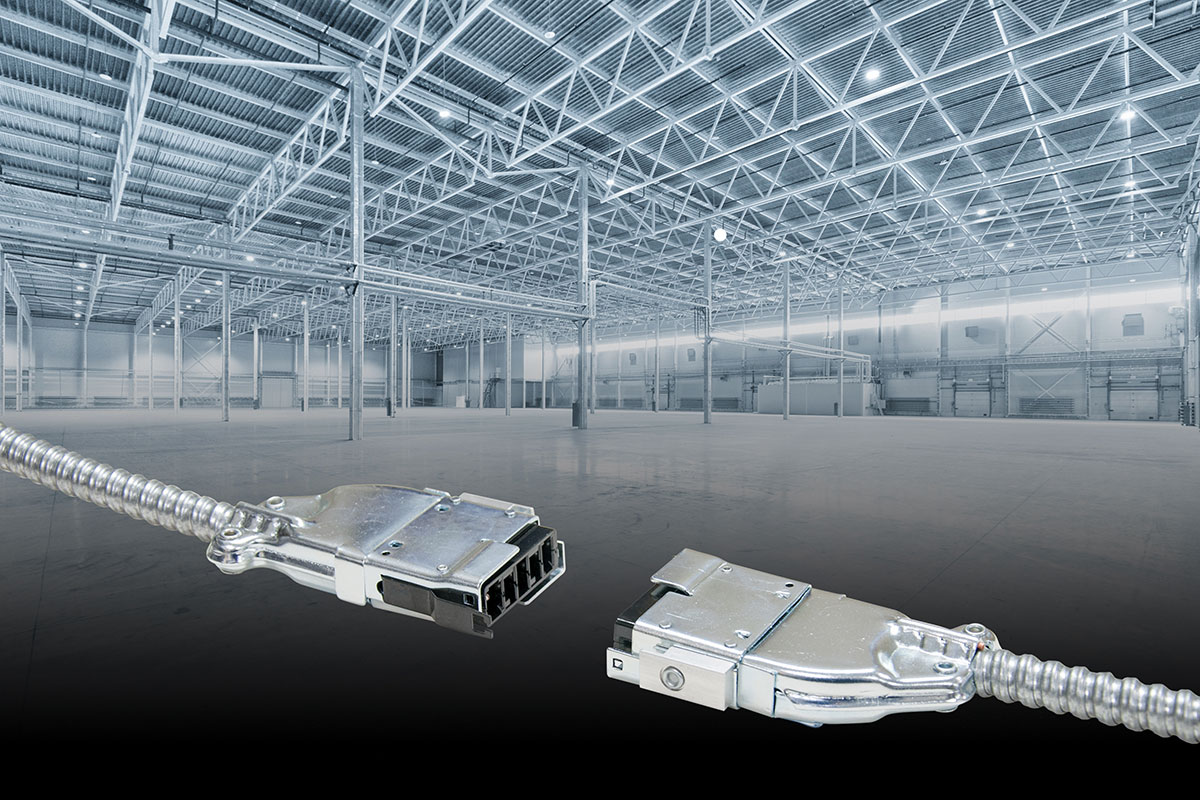

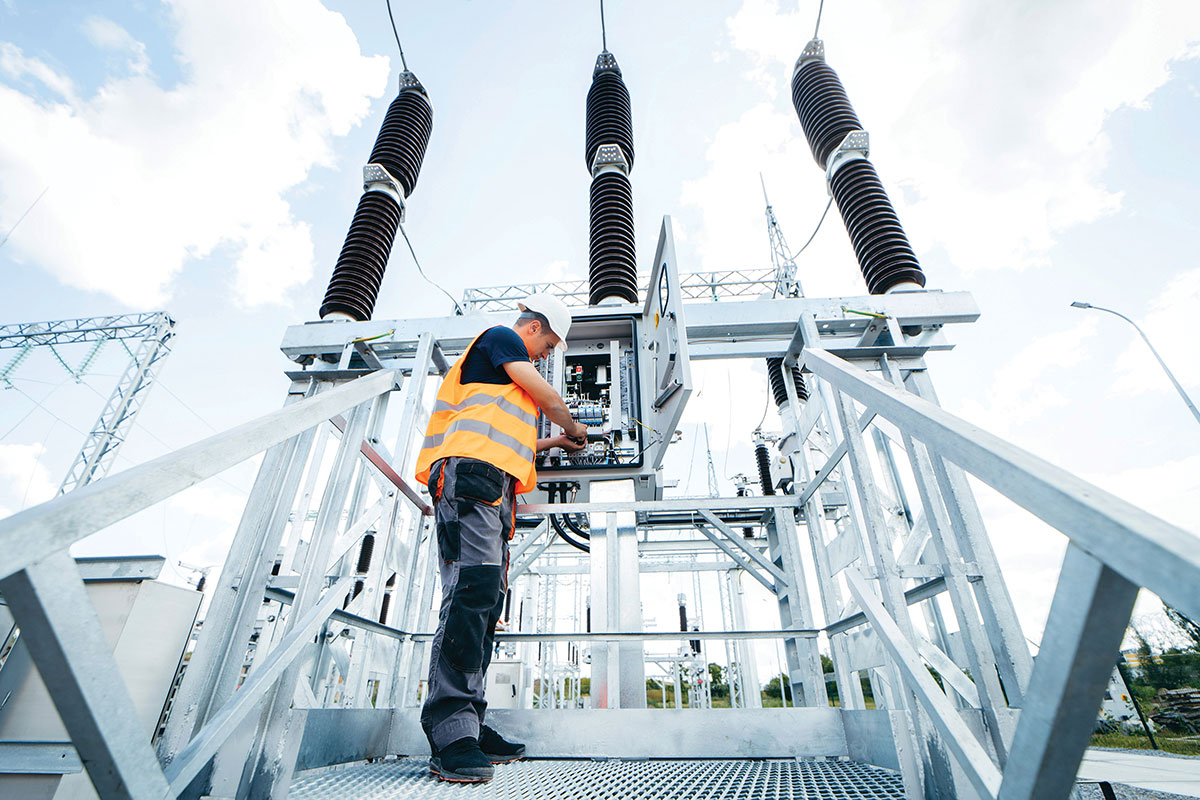
Find Us on Socials